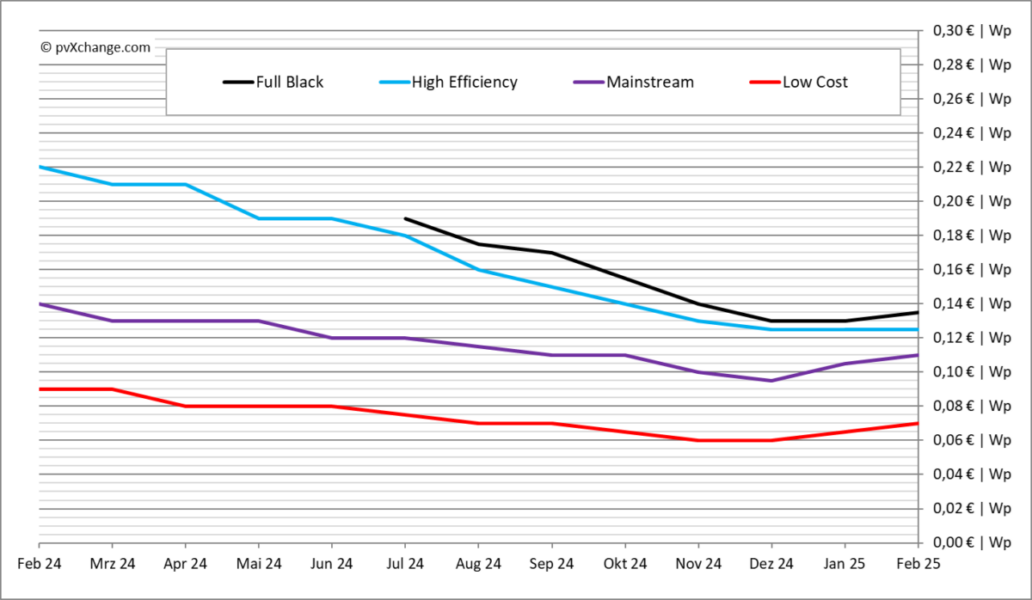Tianjin Zhonghuan Semiconductor has began construction on its new 50 GW wafer manufacturing facility in the city of Yinchuan, the provincial capital of the Ningxia Hui autonomous region. The factory will produce wafers with a size of 210mm. The company has invested RMB12 billion ($1.88 billion) in the new production. The facility is expected to begin manufacturing activities by the end of 2022.
The China Photovoltaic Industry Association (CPIA) forecasts between 55 and 65 GW of newly installed PV capacity for the domestic market in 2021. The new capacity will consist of 20-23 GW coming from the distributed generation segment and 35-42 GW in the form of utility-scale PV plants. CPIA General Secretary Wang Bohua also predicted that total global PV installations would grow to 150 GW this year, with a YoY increase of 17% over 2020.
Manufacturer China Glass yesterday identified Fujian Longtai Industrial Co Ltd as the company it plans to take over. China Glass, which itself rebuffed a HK$1.64 billion (US$211 million) takeover approach from Xinyi Glass in December — announced plans to acquire an unnamed photovoltaic and solar glass business last month. The equity and cash required for the controlling stake in Fujian Longtai has yet to be negotiated. A cooperation agreement on the proposed takeover, announced yesterday, gives China Glass exclusivity for 12 months.
State-owned photovoltaic and display manufacturer Luoyang Glass Co Ltd yesterday signed an agreement to acquire a 60% stake in rival Jinma Investment and Kaisheng (Zigong) New Energy Co Ltd, with the capital injection required to be determined. As part of the acquisition, Luoyang will pay the investment management company a RMB100,000 (US$15,400) monthly fee from the date of acquisition for the rest of the year, with an extension beyond that open to both parties. Luoyang has exclusive rights to negotiate the takeover for the rest of the year.
Chinese power group Shanghai Electric has joined forces with the Chinese Academy of Sciences' Dalian Institute of Chemical Physics to set up a hydrogen R&D center. The agreement aims to develop PEM electrolyzed water hydrogen production, accelerating the development of competitive PEM electrolyzed hydrogen products and promoting industrial applications and scenarios. “In 2020, Shanghai Electric's independently-developed fuel cell engine, which boasts a power capacity of 66 kW and can start in cold temperature environments of as low as -30°C, passed the inspection test of the National Motor Vehicle Product Quality Inspection Center,” the company said in a statement. “It adopts Shanghai Electric's proprietary hydrogen circulation system, which delivers strong power and impressive endurance, with the potential to replace gasoline and diesel engines in commercial vehicles.” Shanghai Electric also claims to have already developed green hydrogen integrated energy industry demonstration projects in Ningdong Base, one of China's four modern coal chemical industry demonstration zones.
This content is protected by copyright and may not be reused. If you want to cooperate with us and would like to reuse some of our content, please contact: editors@pv-magazine.com.





By submitting this form you agree to pv magazine using your data for the purposes of publishing your comment.
Your personal data will only be disclosed or otherwise transmitted to third parties for the purposes of spam filtering or if this is necessary for technical maintenance of the website. Any other transfer to third parties will not take place unless this is justified on the basis of applicable data protection regulations or if pv magazine is legally obliged to do so.
You may revoke this consent at any time with effect for the future, in which case your personal data will be deleted immediately. Otherwise, your data will be deleted if pv magazine has processed your request or the purpose of data storage is fulfilled.
Further information on data privacy can be found in our Data Protection Policy.